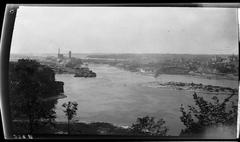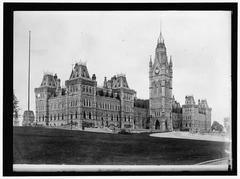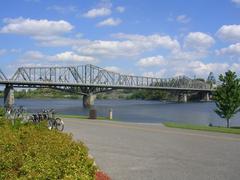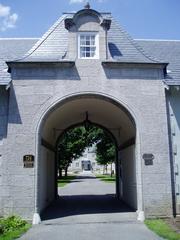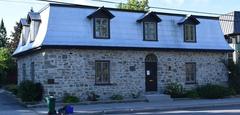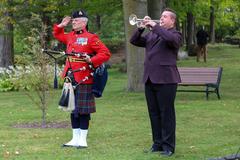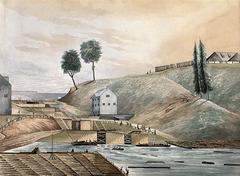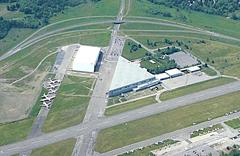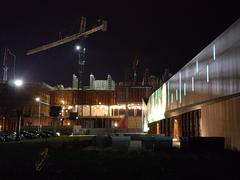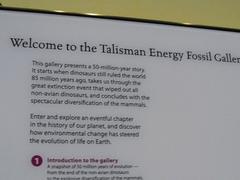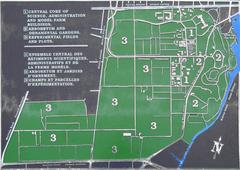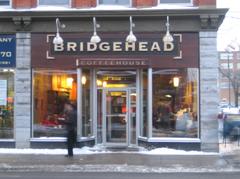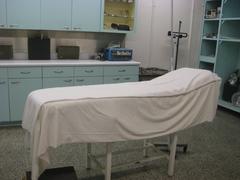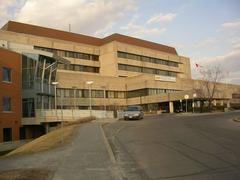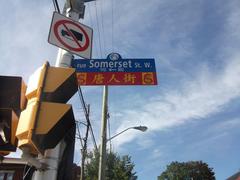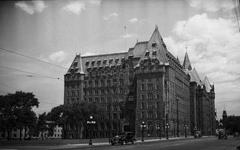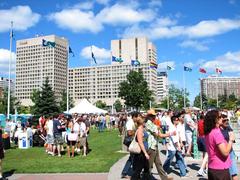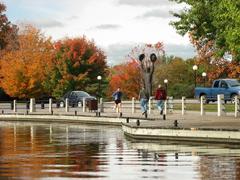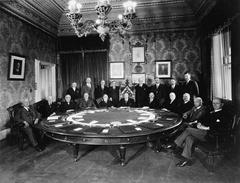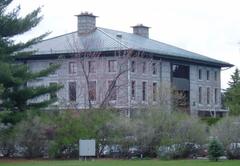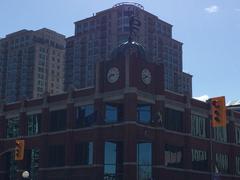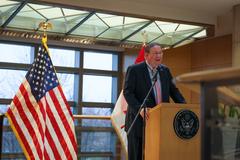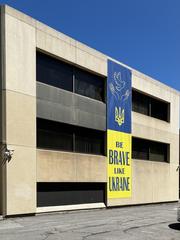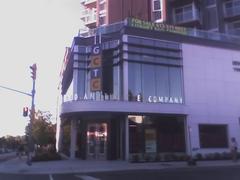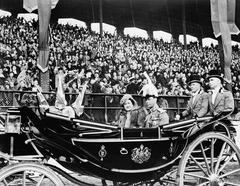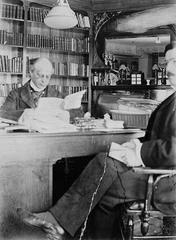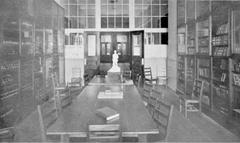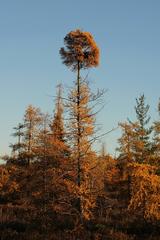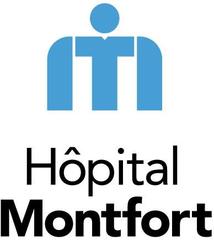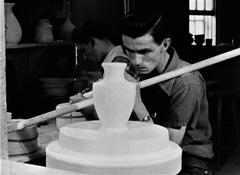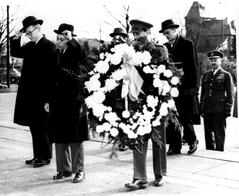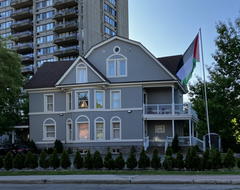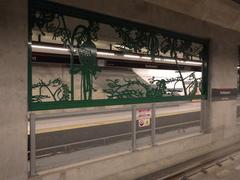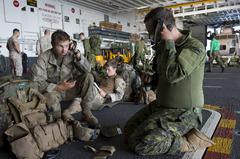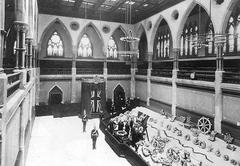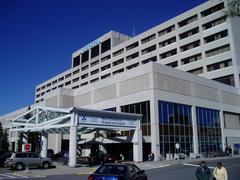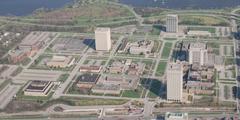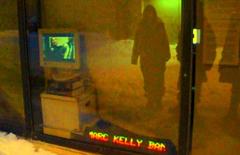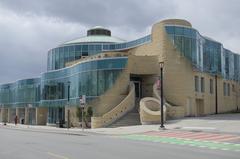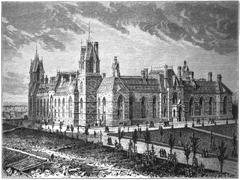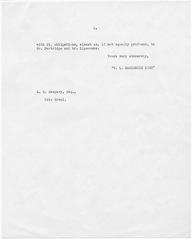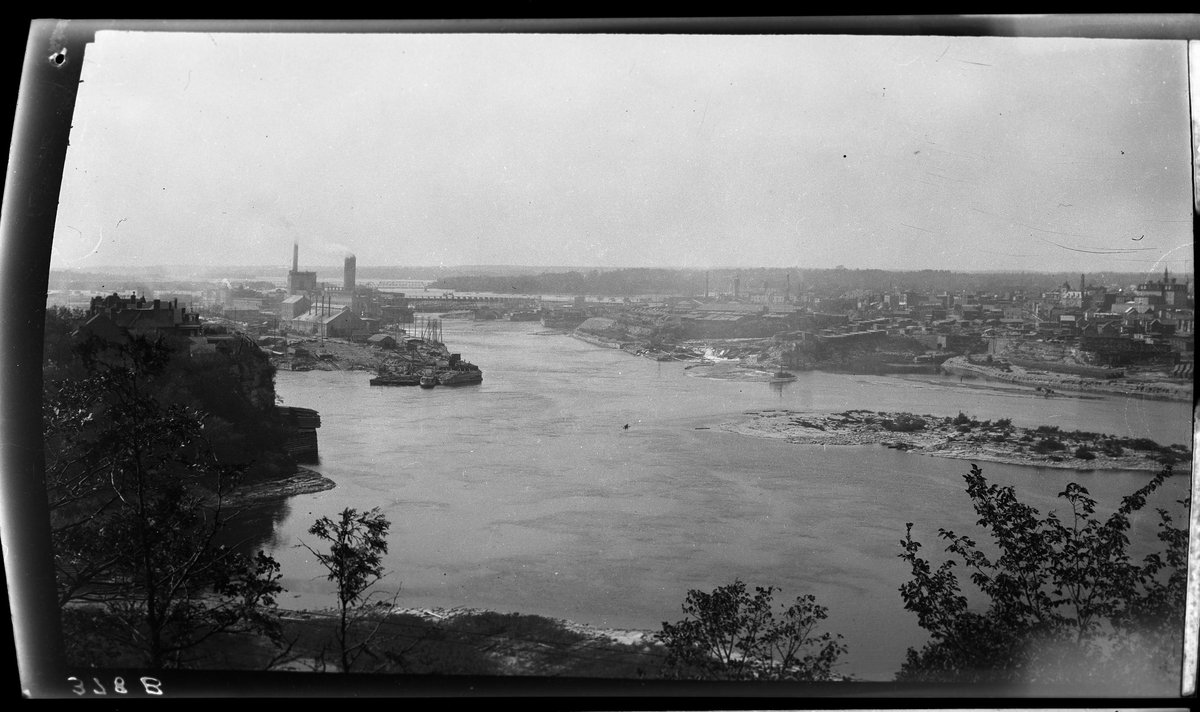
Visiting Parliament Hill in Ottawa: Hours, Tickets, and Tips
Date: 16/08/2024
Introduction
Parliament Hill, located in the heart of Ottawa, Canada, stands as a testament to the country’s rich history and democratic values. Known for its Gothic Revival architecture and historical significance, Parliament Hill has been a central landmark for numerous national ceremonies and celebrations. Originally known as Barrack Hill, this limestone outcrop has served as a significant landmark for First Nations people and European traders alike (Wikipedia). Over the years, it has evolved from a military base to the seat of Canada’s federal government, following Queen Victoria’s selection of Ottawa as the capital of the Province of Canada in 1858 (Wikipedia). The Parliament Buildings, including the iconic Centre Block and Peace Tower, have undergone various transformations, including reconstruction after the devastating fire of 1916 (The Canadian Encyclopedia). Today, Parliament Hill not only represents Canada’s political heart but also serves as a cultural and historical symbol, attracting visitors from around the world who come to explore its architectural beauty and historical significance (Icy Canada).
Table of Contents
- Introduction
- Discover the History and Visiting Guide for Parliament Hill in Ottawa
- Early Use and Indigenous Significance
- Military Beginnings
- Selection as a Parliamentary Precinct
- Construction and Architectural Evolution
- The Fire of 1916 and Reconstruction
- Designation as a National Historic Site
- The Centennial Flame
- Recent Renovations
- Cultural and Political Significance
- Visitor Experience
- Architectural Highlights
- Visiting Hours and Ticket Information
- Travel Tips and Nearby Attractions
- Frequently Asked Questions
- Exploring Parliament Hill: Visiting Hours, Tickets, and Must-See Attractions in Ottawa
- Introduction
- Key Attractions
- The Parliament Buildings
- The Library of Parliament
- Monuments and Sculptures
- Changing of the Guard
- Peace Tower Tours
- Supreme Court of Canada
- National Cultural Attractions
- ByWard Market
- Rideau Canal
- Outdoor Activities
- Festivals and Events
- Culinary Scene
- Performing Arts
- City Tours
- Neighbourhoods and Shopping
- Conclusion
- FAQ
- Visiting Parliament Hill, Ottawa: Tour Options, Tickets, and Tips
- Conclusion
Discover the History and Visiting Guide for Parliament Hill in Ottawa
Early Use and Indigenous Significance
Parliament Hill, originally known as Barrack Hill, is a limestone outcrop with a gently sloping top that was initially covered in a primeval forest of beech and hemlock. For hundreds of years, it served as a significant landmark on the Ottawa River for First Nations people, and later for European traders, adventurers, and industrialists, marking their journeys to the interior of the continent (Wikipedia).
Military Beginnings
After the founding of Ottawa, then called Bytown, the builders of the Rideau Canal established a military base on the hill, naming it Barrack Hill. A large fortress was planned for the site following the War of 1812 and the Upper Canada Rebellion, but the threat of an American invasion subsided, and the project was scrapped (Wikipedia).
Selection as a Parliamentary Precinct
In 1858, Queen Victoria selected Ottawa as the capital of the Province of Canada. Barrack Hill was chosen as the site for the new parliamentary precinct. The development of the area into a governmental precinct began in 1859, following Queen Victoria’s decision (Wikipedia).
Construction and Architectural Evolution
The initial construction of the Parliament Buildings began in 1859, with architects Thomas Stent and Thomas Fuller envisioning a suite of Gothic Revival buildings. These architectural elements were chosen to evoke the history of parliamentary democracy (Icy Canada). The original Centre Block was completed and officially opened on June 6, 1866 (The Canadian Encyclopedia).
The Fire of 1916 and Reconstruction
A significant event in the history of Parliament Hill was the fire of 1916, which destroyed the original Centre Block. The only part of the original Centre Block that survived was the Library of Parliament. Reconstruction began immediately, and the new Centre Block, including the Peace Tower and a Memorial Chamber in honor of fallen First World War soldiers, was completed in 1927 (The Canadian Encyclopedia).
Designation as a National Historic Site
In 1976, the Parliament Buildings and the grounds of Parliament Hill were designated as National Historic Sites of Canada. This designation recognized the site’s historical and architectural significance (Wikipedia).
The Centennial Flame
One of the notable features added to Parliament Hill is the Centennial Flame, which was installed in 1967 to commemorate Canada’s centennial year. The flame is a fire pit with a distinctive design that incorporates flowing water, creating the illusion that the fire is burning through the water. It symbolizes unity and the enduring nature of the Canadian federation (Icy Canada).
Recent Renovations
Since 2002, an extensive $3 billion renovation and rehabilitation project has been underway throughout the precinct’s buildings. This project aims to preserve and modernize the historic structures while maintaining their architectural integrity. The renovations are expected to be completed after 2028 (Wikipedia).
Cultural and Political Significance
Parliament Hill is more than just a collection of buildings; it symbolizes unity, liberty, and collective remembrance. It has served as a venue for major activities, law-making, and the home of the federal government since the mid-19th century. The hill tells the story of Canada’s evolution from a British colony to an independent nation with a diverse population (Icy Canada).
Visitor Experience
Visitors to Parliament Hill can explore the historic chambers, including the House of Commons and the Senate, through guided tours. These tours provide insights into Canadian history, politics, and the democratic process. The grounds of Parliament Hill are open to the public year-round, offering beautiful lawns and scenic views of the Ottawa River. The site also hosts various festivities, including Canada Day celebrations on July 1st (Ottawa Tourism).
Architectural Highlights
The Parliament Buildings are an excellent example of Gothic Revival architecture. The complex includes the Centre Block, East Block, and West Block. The Peace Tower, part of the Centre Block, is one of the most recognizable features of Parliament Hill. The Library of Parliament, with its stunning architecture, is another highlight. The East Block and West Block also feature historic spaces restored to resemble their appearance in the late 1800s (The Canadian Encyclopedia).
Visiting Hours and Ticket Information
Parliament Hill is open to visitors year-round. Guided tours are available, and it’s advisable to check the official website for the most up-to-date visiting hours and ticket information. During peak tourist seasons, such as summer and national holidays like Canada Day, it is recommended to book tickets in advance to secure a spot on the tours. The grounds are accessible to the public at all times, providing a wonderful opportunity for a leisurely stroll or a picnic while enjoying the views (Ottawa Tourism).
Travel Tips and Nearby Attractions
For those planning to visit Parliament Hill, it’s useful to know that parking can be limited, so using public transportation or ride-sharing services is advisable. Nearby attractions include the National Gallery of Canada, the Canadian Museum of History, and the ByWard Market, all of which are within walking distance. Don’t forget to bring a camera, as Parliament Hill offers numerous photographic spots, especially during events and light shows.
Frequently Asked Questions
What are the visiting hours for Parliament Hill?
Visiting hours for Parliament Hill vary depending on the time of year and special events. It’s best to check the official Parliament Hill website for the latest information.
Where can I buy tickets for Parliament Hill tours?
Tickets for guided tours of Parliament Hill can be purchased online through the official Parliament Hill website or at the visitor’s entrance on-site, though availability may be limited during peak times.
Exploring Parliament Hill: Visiting Hours, Tickets, and Must-See Attractions in Ottawa
Introduction
Located in the heart of Ottawa, Parliament Hill stands as a symbol of Canada’s rich history and democratic values. This guide will help you explore the key attractions, visiting hours, ticket information, and much more to make the most of your visit.
Key Attractions
The Parliament Buildings
Parliament Hill is home to three monumental buildings: the Centre Block, the East Block, and the West Block. These buildings are not only the seat of Canada’s federal government but also architectural marvels that embody the Gothic Revival style.
Centre Block
The Centre Block is the most iconic structure on Parliament Hill. Originally completed in 1876, it was designed by Thomas Fuller and Chilion Jones. The building was constructed using local Nepean sandstone, red sandstone from New York, and gray Ohio freestone. Unfortunately, a fire in 1916 destroyed much of the original building, but it was reconstructed using the same Nepean sandstone. The new design included a taller and safer Beaux-Arts Gothic Revival structure, crowned by the Peace Tower (Life On The Roam).
The Peace Tower, standing at 92 meters, is a freestanding structure adorned with four turrets and gargoyles. It houses a Memorial Chamber, a clock, an observation deck, and a 53-bell carillon. The Peace Tower honors fallen Canadian soldiers and offers panoramic views of Ottawa (Life On The Roam).
East Block
The East Block houses the offices of Senators and their staff. It is the best-preserved building on Parliament Hill and is protected as a Classified Federal Heritage Building. The East Block features Nepean limestone around doors and windows, creating a beautiful polychromy that is unique to this structure. The building is an excellent example of the High Victorian Gothic Revival style (Life On The Roam).
West Block
The West Block is the oldest original structure in the complex and has been newly restored. It now houses the House of Commons sessions. The building features a new glass ceiling covering the central courtyard, blending modern design with historical architecture (Life On The Roam).
The Library of Parliament
The Library of Parliament is often considered the most stunning building in Ottawa. Miraculously, it survived the 1916 fire that destroyed much of the Centre Block. The Library is designed in a circular shape, earning it the nickname “The Wedding Cake.” It features flying buttresses connecting 16 turrets and a massive lantern dome. The interiors are equally impressive, although they are currently inaccessible due to ongoing renovations (Life On The Roam).
Monuments and Sculptures
Parliament Hill is adorned with numerous monuments and sculptures that add to its historical and cultural significance. These include statues of prominent Canadian figures and memorials honoring various aspects of Canadian history. The grounds are also a popular site for peaceful protests and demonstrations, reflecting the democratic spirit of the nation (Life On The Roam).
Changing of the Guard
One of the most popular attractions on Parliament Hill is the Changing of the Guard ceremony. This event takes place daily at 10 am from late June to early September. The ceremony features military precision, stirring music, and vibrant drills, making it a must-see for visitors. The tradition dates back to 1959 and has become a staple attraction in Ottawa (Rove Me).
Peace Tower Tours
Visitors can take a free tour of the Peace Tower, which includes access to the observation deck. The deck offers panoramic views of Ottawa, making it a popular spot for tourists. During the summer, free concerts are held at the Peace Tower on Wednesdays at noon (Ottawa Things To Do).
Supreme Court of Canada
Located near Parliament Hill, the Supreme Court of Canada is another top attraction. Free tours are available, allowing visitors to learn about the role of the court in Canadian society and observe a mock hearing. The building itself is an architectural gem, adding to the allure of the area (Ottawa Things To Do).
National Cultural Attractions
Ottawa is home to several national cultural attractions that are easily accessible from Parliament Hill. The National Gallery of Canada and the Canadian Museum of History are two of the most popular museums in the city. Both offer free admission and feature rotating exhibitions, making them ideal for repeat visits (Ottawa Tourism).
ByWard Market
Just east of Parliament Hill, the ByWard Market is a historic farmers’ market and shopping district. By day, it offers a variety of fresh produce and artisanal goods, while by night, it transforms into a vibrant area filled with restaurants and clubs. The market is a must-visit for anyone looking to experience the local culture (Ottawa Tourism).
Rideau Canal
The UNESCO-listed Rideau Canal is another significant attraction near Parliament Hill. In the warmer months, it is filled with boaters, while in the winter, it becomes the world’s largest naturally frozen skating rink. The canal winds through the heart of Ottawa, offering stunning views and recreational opportunities year-round (Ottawa Tourism).
Outdoor Activities
Ottawa offers a plethora of outdoor activities, making it a great destination for adventure enthusiasts. The Ottawa River is renowned for its whitewater rafting and kayaking opportunities. Additionally, the city boasts around 800 kilometers of recreational pathways, perfect for cycling, hiking, and exploring natural areas (Ottawa Tourism).
Festivals and Events
Ottawa is a city of celebrations, offering a year-round calendar of festivals and special events. Highlights include the Canadian Tulip Festival in May, Canada Day celebrations on July 1, and Winterlude in February. Music festivals like the Ottawa Jazz Festival and Ottawa Bluesfest attract some of the world’s biggest acts, making the city a vibrant cultural hub (Ottawa Tourism).
Culinary Scene
Ottawa’s culinary scene is thriving, with a diverse range of restaurants and chefs making a name for themselves. Visitors can explore the city’s food culture through dining tours, gourmet food tours, and visits to farmers’ markets. The options are endless, ensuring a delightful culinary experience for all (Ottawa Tourism).
Performing Arts
The National Arts Centre is Ottawa’s premier venue for performing arts, offering a full lineup of music, dance, and theatre. The city also has a thriving local theatre scene, with venues like the Great Canadian Theatre Company and Ottawa Little Theatre hosting a variety of performances (Ottawa Tourism).
City Tours
Ottawa offers numerous ways to explore its sights and attractions. Options include land and water tours with the Lady Dive Amphibus, leisurely cruises on the Ottawa River or Rideau Canal, and walking or cycling tours. These tours cater to different activity levels and interests, ensuring a memorable experience for all visitors (Ottawa Tourism).
Neighbourhoods and Shopping
Ottawa’s unique neighborhoods offer distinctive shopping, dining, and nightlife experiences. From the must-see ByWard Market area to the community feel of the Glebe and the trendy Wellington West, there is plenty of local flavor to soak up. Visitors can also enjoy national treats and local delicacies, adding to the overall experience (Ottawa Tourism).
Conclusion
By exploring these key attractions, visitors to Parliament Hill can gain a comprehensive understanding of its historical significance, architectural beauty, and cultural richness. Whether you are interested in politics, history, or simply enjoying the scenic views, Parliament Hill offers something for everyone.
FAQ
What are the visiting hours for Parliament Hill?
Visiting hours vary throughout the year. Generally, it is open from 9 am to 5 pm, but it is advisable to check the official website for the latest updates.
Do I need tickets to visit Parliament Hill?
Entrance to Parliament Hill is free, but tickets may be required for specific tours or events. It is best to book in advance, especially during peak tourist seasons.
How can I get tickets for tours?
Tickets for tours can be obtained from the visitor center located on Parliament Hill or booked online through the official Parliament Hill website.
Is Parliament Hill accessible?
Parliament Hill is wheelchair accessible, with ramps and elevators available in most buildings. Accessible tours can also be arranged in advance.
Are there any special events to look out for?
Yes, Parliament Hill hosts various special events throughout the year, including Canada Day celebrations, the Changing of the Guard, and free concerts at the Peace Tower. Check the official website for the latest event schedule.
Call to Action
For more information on visiting Parliament Hill and other attractions in Ottawa, be sure to download the Audiala mobile app, check out our other related posts, and follow us on social media for the latest updates## Visiting Parliament Hill, Ottawa: Tour Options, Tickets, and Tips
Brief History and Cultural Significance
Parliament Hill, located in Ottawa, Canada, is not only the seat of Canada’s federal government but also a symbol of the country’s rich history and cultural heritage. The Gothic Revival architecture of the Centre Block, the iconic Peace Tower, and the surrounding grounds have been central to many national ceremonies and celebrations.
Tour Options and Booking
Guided Tours
Parliament Hill offers a variety of tours that cater to different interests. Visitors can enjoy free, guided tours of the Senate at the Senate of Canada Building, the House of Commons in the West Block, and the East Block. For tickets and tour times, visit the Parliament of Canada Tours.
The Immersive Experience
The immersive experience tour provides an in-depth look at the history and functioning of the Canadian parliamentary system. This tour includes multimedia presentations and interactive exhibits, offering a comprehensive understanding of Canada’s political landscape. Advanced booking is recommended, especially during peak tourist seasons.
Conclusion
Parliament Hill in Ottawa is more than just a collection of government buildings; it is a symbol of Canada’s journey from a British colony to an independent nation with a rich cultural heritage. The site’s architectural marvels, such as the Centre Block and Peace Tower, stand as testaments to the country’s democratic values and historical evolution. Significant events like the fire of 1916 and the subsequent reconstruction have shaped its current form, making it a site of both historical and architectural interest (The Canadian Encyclopedia). Visitors to Parliament Hill can immerse themselves in Canadian history through guided tours, explore the beautiful grounds, and participate in various national celebrations and events. The nearby attractions, such as the National Gallery of Canada and the ByWard Market, add to the overall experience, making it a must-visit destination in Ottawa (Ottawa Tourism). As ongoing renovations aim to preserve and modernize this historic site, Parliament Hill continues to be a beacon of Canada’s past, present, and future (Wikipedia).
References
- Wikipedia. (n.d.). Parliament Hill. Retrieved from Wikipedia
- The Canadian Encyclopedia. (n.d.). Parliament Buildings. Retrieved from The Canadian Encyclopedia
- Icy Canada. (n.d.). Parliament Hill: The Heart of Canada’s National Identity – An In-Depth Exploration. Retrieved from Icy Canada
- Life on the Roam. (n.d.). Parliament Hill History. Retrieved from Life On The Roam
- Rove Me. (n.d.). Changing of the Guard Ceremony. Retrieved from Rove Me
- Ottawa Things To Do. (n.d.). Things to Do in Ottawa in Summer. Retrieved from Ottawa Things To Do
- Ottawa Tourism. (n.d.). Guided Tours of Parliament. Retrieved from Ottawa Tourism
- Ottawa Tourism. (n.d.). Top 10 Things to Do in Ottawa. Retrieved from Ottawa Tourism
